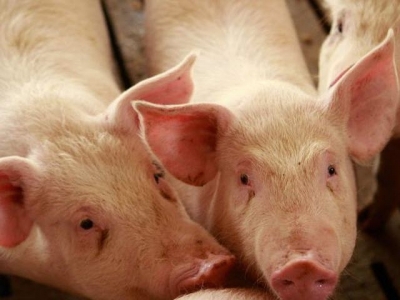Using organoids to unravel feed efficiency in pigs

Proof of principle shows organoids may be used to study complex traits like feed efficiency.
The Host-Microbe Interactions (HMI) and Animal Breeding & Genomics (ABG) groups of Wageningen University & Research (WUR) in the Netherlands and Breed4Food (B4F) performed a proof of principle to investigate the use of organoids to study feed efficiency in pigs.
During the recent seminar “Organoids to Investigate Efficiency in Pigs,” the proof of principle and some preliminary results were presented. The aim of the seminar was to gain more knowledge on the use of organoids to study complex traits and to present the results of the proof-of-principle experiment studying feed efficiency in pigs, WUR said.
Improving feed efficiency is an important trait in many livestock species, but the biological mechanisms underlying feed efficiency are largely unknown, WUR said. Organoids provide an excellent in vitro model system to study complex traits that are not easily accessible in vivo.
Therefore, HMI, ABG and B4F collaborated in setting up a proof-of-principle experiment using organoids isolated from intestine samples of slaughter pigs with divergent phenotypes for feed efficiency to measure nutrient uptake, WUR reported.
A total of 12 pigs were selected: six efficient pigs and six less-efficient pigs. From these pigs, tissue from the ileum was collected and grown to organoids. From both groups, three organoid cultures were challenged using commensal Escherichia coli, while three organoid cultures were unchallenged. A transport study was performed to measure differences in histology and gene expression.
According to WUR, early results indicate that there are some differences in gene expression among pigs. However, further research is needed to do more in-depth analysis.
Organoid model
Developing the organoid system is very important for studying many key traits. The researchers noted that a literature review showed that the organoid model system has been applied for most of the livestock species using different organ tissues. Although the organoid model system seems promising to study complex traits, there are still a number of challenges to the system, including developing a robust culture of organoids, validation of the use of organoids as proxy for in vivo performance and high-throughput phenotyping.
The proof of principle performed by HMI, ABG and B4F is one of the first validating organoids as proxy for in vivo performance. In the long term, the results of this study potentially can be used to select for better feed efficiency by including biological information as weighted markers in future genomic selection analyses, WUR said.
Related news
 How to formulate energy-rich diets for growing piglets
How to formulate energy-rich diets for growing piglets Energy is the most expensive, critical and essential nutrient in any pig feed and a nutrient that is used to prorate all other nutrients
 Three ways to implement piglet creep feeding
Three ways to implement piglet creep feeding Creep feeding is a well-known practice, but it is not always successful. Here’s how to make it work at your pig farm.
 More studies needed to back up use of antibiotic alternatives in pig diets: review
More studies needed to back up use of antibiotic alternatives in pig diets: review The most commonly used feed additives in pig diets are acidifiers, zinc and copper, prebiotics, probiotics, yeast products, nucleotides, and plant extracts.